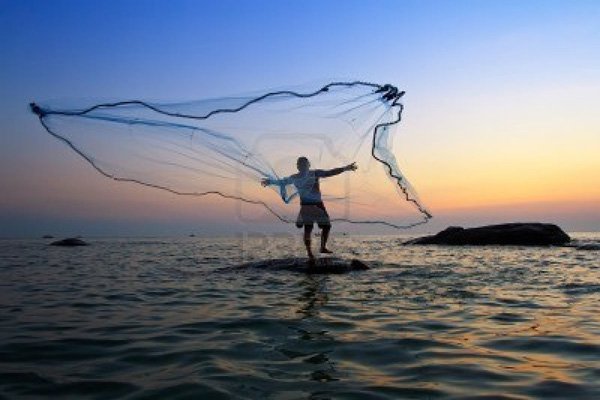2016/7/18 16:17:56

Flip through a photo album of anyone that has spent a lot of time fishing in the Mississippi Sound and you are bound to see one. A huge, bony fish that looks like a five-foot long silverside minnow. This fish, if you didn't already know, is the tarpon, and they are a near guarantee of a good time.
What are Tarpon?
Known scientifically as Megalops atlanticus, the Atlantic Tarpon is a large boney fish of the herring family with blue-green backs and shiny silvery scales that cover their whole body. A square jaw that seems to always be set in an impressive under bite give it a distinctive mug. These big fish have prehistoric origins and they are good at what they do-- eating smaller, slower fish. They hang out primarily over shallow, dark bodies of water with sandy mud bottoms, which pretty much defines the Mississippi Sound. While they lay eggs and spend their early lives in brackish water, once they are mature, they hit the open ocean and migrate back and forth across Gulf and the Atlantic for the next thirty or so years.
They grow slowly and don't reach maturity until they are about seven years old at which point they run four feet long.
Regs
Tarpon have long been considered one of the truest of 'sport-only' gamefish, due to the poor flavor of their meat. With that in mind, the state sets few limits on the taking of them. A current saltwater fishing license is required to fish south of Highway 90, which is where any well-respecting tarpon in state waters will be. Other than that, knock yourself out.
The tarpon fishery that rolls through the barrier islands from June to September holds a number of these giant silver bonefish. These are the exact same fish that Miami tourists pay megabucks for to catch there December to May, right here on your own home turf. Typical size is over four feet with average weights of 75-pounds common. The current conventional record for tarpon caught in state waters recognized by DMR is 167-pounds caught in 2001 by Dr. Keith Goodfellow. The current IGFA All-Tackle record for Tarpon is a brutal 286-pound, 9-ounce fish caught off the African coastline of Guinea-Bissau (where all the hurricanes start at) in 2003 by one Max Domecq. While odds are you won't beat the IGFA record in Mississippi waters, there is nothing saying a bigger one isn't out there waiting.
While there is no current fly record for tarpon on file with the state, many saltwater tarpon anglers who wade into the shallows along the barrier islands have good luck and a heck of a good time stalking these fish. Since in most cases, these are catch and release instances, and records have to be landed at official scales, there may not be a fly record anytime soon unless you want to set it.
These fish are hearty and hard to kill, but unless you plan to mount your catch or have a potential record breaker, take some pictures for the record and turn it loose.
Tips and Tricks
Tarpon love small baitfish and as such, you can always get the best results on these dinosaurs of the deep by casting or trolling with live mullet, shrimp, and small crabs. When eschewing the live baits, cigar minnows work as do dead shrimp. When using artificals, think about imitating a small coastal baitfish as much as possible and stick to the spoons. One of the best tarpon lures, especially around Cat Island, has always been medium sized gold or silver Clark spoons with heads on them. Be sure to bring enough rod to land a 100-pound acrobatic fish and spool up with at least 30-pound test.
Use patience with Mr Tarpon when trying to set the hook as their prominent and distinctive under bite and piranha looking mouth but when you do, hold on, and have plenty of line on your reel. Drifting a minnow or even a live croaker around the island cuts from Round Island to the Chandeleurs is a great tactic, especially a night. Kite fishing, imported from Florida, is also taking off for these big boys.
If you aren't boat-bound to make it to the islands, tarpon are well known to hover just offshore in water only few feet deep to chase mullet schools. If you have a good casting reel and can make it to the Broadwater pier or Coliseum pier, odds are large tarpon are in your reach.
No matter what, you can be sure there will always be a tarpon out there with your name on it.
Latest Fishing Technology And Fishing Gears
Fish finderImagine youre sitting out there on your fishing boat, you whip out a cool gadget you just
These fly fishing tips for pike will help you to make that catch almost every
Exclusive Carp Fishing Holidays: Stay In A Delighted Way
Holidaying in France can be more fantastic, if combined with carp fishing. Although United Kin
Contact management E-mail : [email protected]
Copyright © 2005-2016 Outdoor sports All Rights Reserved